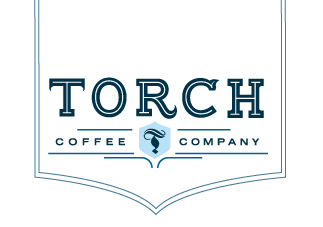By Clay Draper
Torch Coffee Instructor
Robusta's are recognized by their large leaves, bigger than the size of one's hand.
In specialty coffee, everyone knows and loves arabica coffees. For most of the market, if it is not arabica, then they will not even consider offering it in their shops, outside of a few stores that will use robusta in their espresso blends, but never as single origin.
I too used to be an arabica elitist, thinking that it was the only species of coffee that was able to produce specialty quality aromas and flavors in the cup. I looked at robusta as the black sheep of the coffee family, suitable only for low-grade commercial coffees.
But I was wrong.
Apart from having the occasional cup of robusta coffee out of curiosity, my first real experience with robusta came when we hosted our first R-grader course, also the first R-grader to be held in China, in July 2015, at our lab in Pu’er (the famous tea capital). I was interested in learning more about this species and important part of the coffee industry, but was not looking forward to a week of gulping down robusta. And at first, my expectations seemed to be fairly accurate, with the first cupping session showcasing the typical bitter robusta flavor, with no real specialty grade robustas to speak of.
But then my eyes were opened. During one of the cupping sessions, we cupped a coffee that was so sweet, it tasted like someone had put a spoonful of honey into the cup. It was such a complex and floral cup that I thought an arabica had mistakenly been placed on the table. It was a robusta coffee from Bolaven Farms in Laos, and it was incredible. It could have been placed on a table with all arabicas and no one would guess it didn’t belong, and it would in fact out-score most.
Throughout the week, and since, we have had many high quality, specialty grade robustas come through our lab, from places such as Myanmar, Laos, Mexico, Uganda, and India. We have found that, not only can robusta perform as good as arabicas, but they can in fact be very high grade, quality coffees, out-performing many nice arabicas.
And this is good news, as robusta has a very important role to play in the specialty coffee industry, as well as having many other advantages over it’s arabica brother. With the future uncertain due to climate change, it is very possible and likely that robusta will be playing an ever increasing role in the specialty industry, as where growing regions and climates that are currently suitable for growing arabica will decline, robusta will still be able to thrive.
Robusta is also a higher yielding plant than arabica, has more antioxidants, has almost twice the caffeine (good for some), and is far more resistant to pests and diseases than arabica (hence the name robusta).
All of this considered, if you are planning to work and thrive in the specialty coffee industry, robusta will almost certainly be playing a large role in your business and your life, so it is best to stay ahead of the curve and learn about this coffee, what it’s qualities are, how is it different than arabica, how to cup and score this coffee, and how to use it to accomplish your goals. All of this considered, if you are planning to work and thrive in the specialty coffee industry, robusta will almost certainly be playing a large role in your business and your life, so it is best to stay ahead of the curve and learn about this coffee, what it’s qualities are, how is it different than arabica, how to cup and score this coffee, and how to use it to accomplish your goals. And what a better place to start than the R-grader course created by CQI, which covers everything mentioned here and more!












